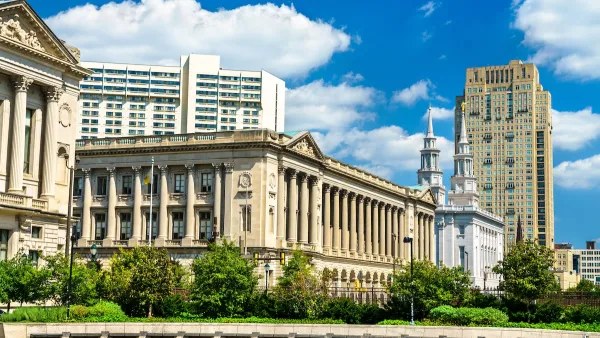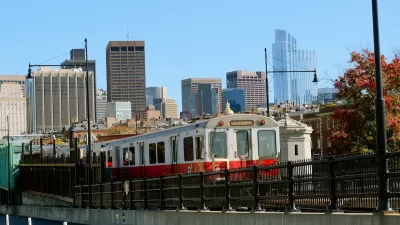In my last post, I suggested that transit’s “resurgence” is, ultimately, much ado about nothing. Transit’s increased ridership, while important for transit managers, will do little to change fundamental travel patterns of US urban areas.
In my last post, I suggested that transit's "resurgence" is, ultimately, much ado about nothing. Transit's increased ridership, while important for transit managers, will do little to change fundamental travel patterns of US urban areas.
Today, I would like to suggest that transit's inability to pierce the hold of automobility on US urban areas is the least of its worries. The real long-term problem faced by transit agencies is that their service-fixed route transportation modes designed to carry large numbers of people in buses or trains-is what economists call an "inferior good." The term is not intended to be pejorative. It's a technical one and characterizes an important economic relationship between income and the demand for a specific product or service. As our income increases, we consume less transit, opting for alternatives, most notably the automobile.
Mobility, on the other hand, is a "normal good": as our income rises, we want more mobility, in terms of flexibility and speed. (Some might think that we devote a higher share of our budget to transportation as our incomes go up, but historically transportation has tended to average around 9 to 10 percent.) Those transportation modes that provide more mobility will see demand increase. That's one reason why vehicle miles traveled and air travel have grown so drastically along with our nation's wealth, while public transport's share of total travel has fallen.
Can transit break out of this economic trap? Possibly, but it will be a long, difficult road. Transit's long-term viability will depend on its ability to provide a reliable, superior alternative to its competition, not a "second best" alternative that consumers choose when they can't afford their first choice (e.g., the automobile). If transit managers want to grow their customer base, let alone gain market share, they will have to provide very high levels of quality and service.
This task is complicated by the fact transit agencies don't rely on their customers for their revenue. Only about one third of transit's revenues come from customer fares. The remainder comes from taxes and federal grants (often funded by road users). Transit agencies have stronger incentives to please grant makers or elected officials than the people that use their service, or, more importantly, could potentially use their service.
Transit can compete, but only if managers make the strategic decision to focus on their core services-providing a superior travel alternatives-and exploit niches in the travel market (such as express bus services). Also, some transit agencies have wisely focused their resources on providing superior service along heavily traveled routes, or in urban neighborhoods where transit provides a complementary alternative, rather than a substitute, for other modes.
What transit cannot do is depend on high gas prices to make us worse off financially in order to push us out of our cars and onto buses and trains. Nor should transit advocates use public policy to purposely degrade the quality of transportation alternatives such as the car to tip the scales unfairly in transit's favor. Those approaches impoverish us all and threaten the economic competitiveness of our cities as well as the economy.

Maui's Vacation Rental Debate Turns Ugly
Verbal attacks, misinformation campaigns and fistfights plague a high-stakes debate to convert thousands of vacation rentals into long-term housing.

Planetizen Federal Action Tracker
A weekly monitor of how Trump’s orders and actions are impacting planners and planning in America.

Chicago’s Ghost Rails
Just beneath the surface of the modern city lie the remnants of its expansive early 20th-century streetcar system.

Bend, Oregon Zoning Reforms Prioritize Small-Scale Housing
The city altered its zoning code to allow multi-family housing and eliminated parking mandates citywide.

Amtrak Cutting Jobs, Funding to High-Speed Rail
The agency plans to cut 10 percent of its workforce and has confirmed it will not fund new high-speed rail projects.

LA Denies Basic Services to Unhoused Residents
The city has repeatedly failed to respond to requests for trash pickup at encampment sites, and eliminated a program that provided mobile showers and toilets.
Urban Design for Planners 1: Software Tools
This six-course series explores essential urban design concepts using open source software and equips planners with the tools they need to participate fully in the urban design process.
Planning for Universal Design
Learn the tools for implementing Universal Design in planning regulations.
planning NEXT
Appalachian Highlands Housing Partners
Mpact (founded as Rail~Volution)
City of Camden Redevelopment Agency
City of Astoria
City of Portland
City of Laramie





























